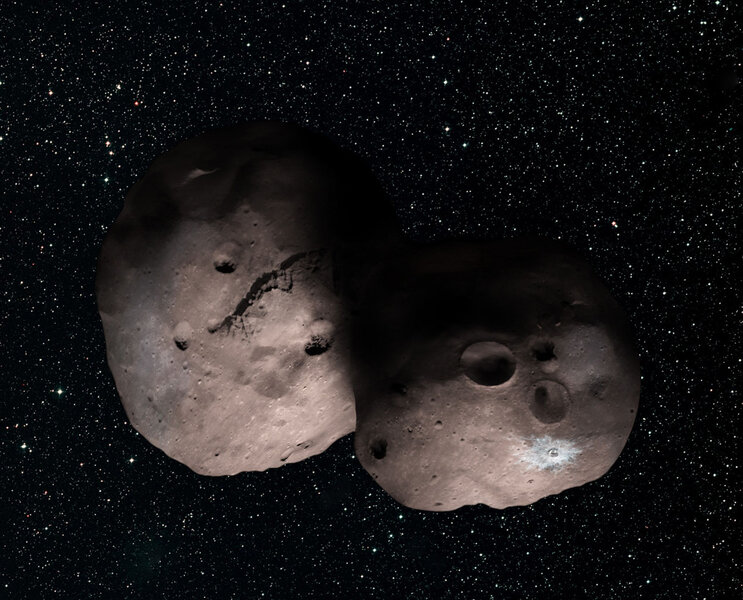Create a free profile to get unlimited access to exclusive videos, sweepstakes, and more!
Help name a rock in the outer solar system!

The New Horizons space probe shot past Pluto in July 2015. Traveling at more than 14 kilometers per second, the spacecraft wasn't designed to hang around the tiny world. Instead, it flew past, sailing into the dark.
But its journey still has another sight to see on the way to interstellar space: On January 1, 2019, it will fly by the small object currently designated (486958) 2014 MU69. It's actually likely to be two small objects orbiting each other, roughly 20 and 18 kilometers wide each (it's also possibly a contact binary, two objects stuck together like the comet 67/P Churyumov-Gerasimenko).
MU69 wasn't discovered until just before the Pluto encounter. It's in what's called the Kuiper Belt, a region past Neptune populated by rocky iceballs (or icy rockballs) ranging in size up to a couple of thousand kilometers across, the size of Pluto. We don't know how many are out there, but there are likely more than 100,000 more than 100 km across!
Scientists knew that New Horizons would keep going past Pluto and head into the Kuiper Belt, and hoped that NASA might give them a mission extension to explore one. Hubble Space Telescope was used to search the volume of space the probe would fly through, and MU69 was found.
The encounter with this odd object is only a little over a year away, and the New Horizons team has decided to do something fun: They need a nickname for MU69, and they want your help.
They've started a campaign to get the public to suggest names for it! You can submit your idea via a nomination form. They're looking for names associated with something distant and cold, on the frontier of what's known.
Although this is just a nickname, at some point the International Astronomical Union will give it a formal name. Who knows; they might take the informal name and make it official! So choose with care.
The nominations will close at 20:00 UTC on December 1.
And before you ask, why yes, I did submit a couple of names (given it may be binary, submitting two names is a good idea). The ones I sent are Erebus and Tartarus. Why these? In Greek mythology Erebus is the name of a way station for the souls of the dead on their way to the underworld, and Tartarus (sometimes used interchangeably with Erebus, according to Wikipedia) is an abyss past the underworld where damned souls are kept.
I like these; they're mythologically appropriate, and even better, there are no minor planets (small worlds) with those names (though, to be fair, Erebus is the name of a volcano in Antarctica and a crater on Mars). That means there's room for them to become official! Many Kuiper Belt Objects are given names from other cultures than Roman or Greek, which I'm all for, but seeing how well these names fit, I'm willing to go old-school.
Once you submit a name, the New Horizons team will look at the nominations and choose ones to be added to the ballot. At that point, the public can vote. As I write this, the name Mjölnir is winning. It's a good name, but there's already an asteroid with that name. I don't think it can become official. Many of the other names are good, too. But maybe you can come up with something better.
And who knows … in a century or so, perhaps people will visit this small object. Maybe it’ll be to mine it for resources, or simply to satiate their curiosity. And when they do, they'll look it up in a database to see what it’s called.
Just think: The name they find and use may be one you gave it. Make it a good one!



























